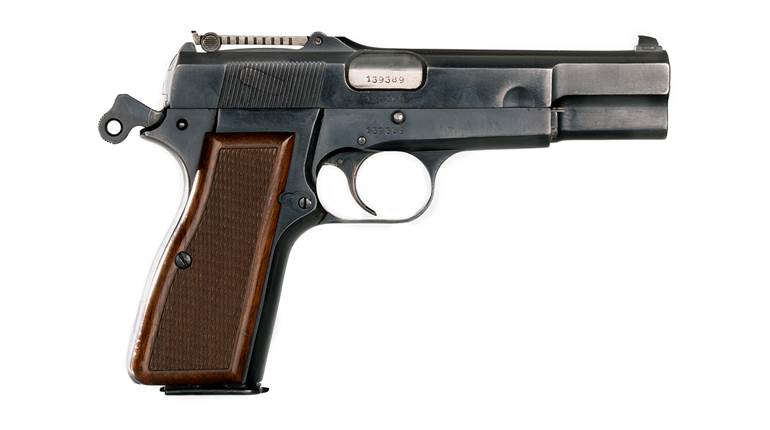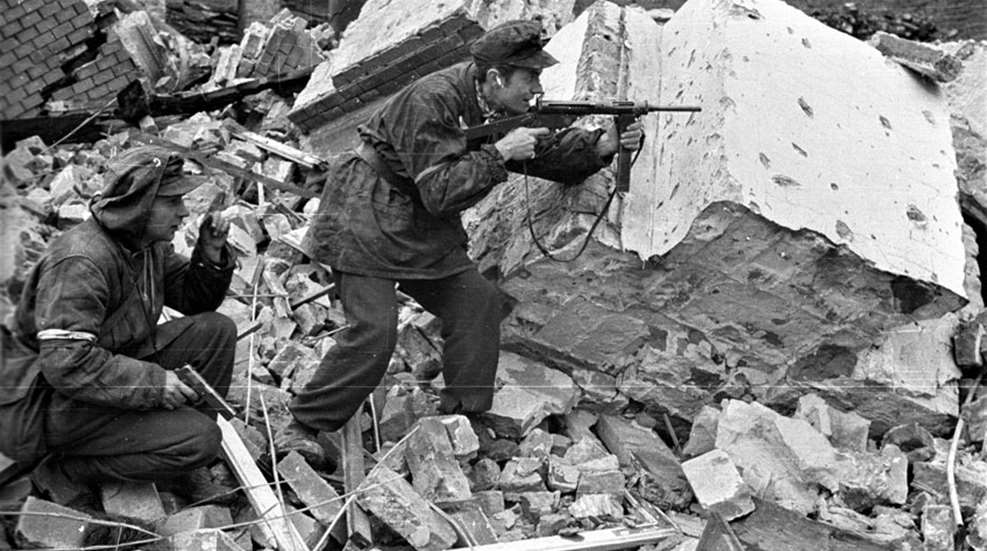
Seventy-five years ago, 20,000 Polish citizens—men, women and children alike—rose against their German occupiers. Polish resistance leaders pitted the unbridled patriotism and heroism of their people against the iron grip of their Nazi oppressors. The Warsaw Uprising, as it is now called, became a shining example of resistance for all the people of Occupied Europe. Sadly, the Warsaw Uprising proved to be a tale of frustration and heartbreak. Years later, far too few people in the West have even heard of it.
An attempt to exterminate all things Polish
Nazi dogma labeled ethnic Poles as Untermensch, or “subhuman” to the Aryan race. Subsequently, Polish Jews were fast-tracked for extermination, with close to 3 million Polish Jews killed by May 1945. Germany aggressively pursued ethnic cleansing in its closest eastern neighbor. By the end of the war, more than 5 million ethnic Poles had been killed during the Nazi occupation. The Nazis also attempted to destroy the Polish Catholic Church, targeting Polish priests for deportation and murder. Millions of Poles were displaced from their homes, particularly in western Poland, as the Germans pushed them out of territory close to the Reich.
Trapped between two evil empires
While the aforementioned atrocities were part of Poland’s war with Germany, the Poles’ difficulties with the Soviet Union also turned deadly. Poland’s long-standing conflict with communist Russia had begun in 1920; after the Poles turned back a Bolshevik invasion, the relationship between the two nations had fallen into an uneasy peace for 19 years. On Sept. 17, 1939, just 16 days after the Nazis invaded Poland from the west, Joseph Stalin sent his troops storming into Poland from the east. The “Secret Additional Protocol” of the Molotov-Ribbentrop Pact of August 1939 manifested itself militarily as Poland was crushed and then divided by two European giants possessed by widely different ideologies. Sadly, Poland’s western allies did little to help.
The Soviet occupation of eastern Poland was instantly brutal. NKVD agents (predecessors of the KGB) began their campaign of terror with accusations and deportations, quickly progressing to torture and murder. By April of 1940, the killings had escalated to massacre: 22,000 Poles were executed over the period of a month near Katyn. About 14,000 of the dead were Polish military and police officers. The rest were leading industrialists, landowners, politicians, scholars and clergy members. Among the murdered was Baruch Steinberg, the chief rabbi of Poland’s multi-ethnic army.
The mass grave site of the Katyn Massacre remained undiscovered until April 1943, when German troops began to excavate the location. Germany made significant propaganda use of the discovery of the Soviet war-crime. Red Cross officials inspected the site, and ultimately the atrocity drove a wedge between the Polish Government-in-Exile and the Soviet Union. Soviet officials proclaimed the Germans to be the culprit, but few in the West could deny the evidence. Consequently, cooperation between Polish Resistance forces and the Red Army would be minimal. The lack of Soviet cooperation would ultimately doom the efforts of the Polish Home Army in the Warsaw Uprising.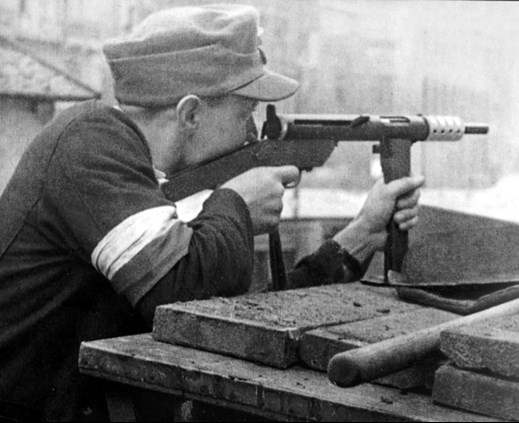
A young member of the Home Army with the Polish-designed and built Błyskawica 9 mm Luger SMG.
Polish Lightning: the Błyskawica Submachine Gun
During 1942 a Polish engineer named Wacław Zawrotny presented a submachine gun concept to the Polish Home Army (“Armia Krajowa”), offering an inexpensive weapon that would meet the needs of the growing ranks of the Polish resistance. This simple SMG could be made clandestinely in a variety of workshops, and even assembled by workers unfamiliar with firearms design. His idea was quickly accepted by the Home Army command, and the weapon was named “Błyskawica” (Polish for "lightning"). The challenges for such a project were extreme, as all phases of the design, testing and production were done in secret during the Nazi occupation, and then right under the noses of the German military. To simplify production, the Błyskawica used basic materials like sheet metal and machine tubing, as well as screws, to avoid the need for welding to join the major parts groups. Manufacturing sites were distributed around Poland, with the majority in Warsaw.
The main Błyskawica assembly and test facility was built in the cellars of a Catholic church in central Warsaw. A concrete tunnel provided the underground range, and test firings were carefully conducted during peak traffic hours on the city streets above to further mask the sounds. The assembly area was rigged with explosives to destroy the manufacturing plant in case the Gestapo came to investigate. Every step of the design, testing and production process was fraught with danger.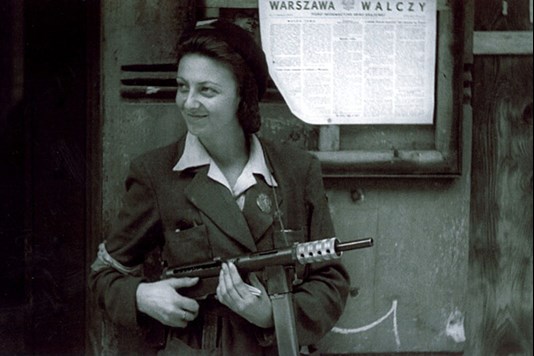
A young woman in the Polish resistance. The Błyskawica SMG she carries used Sten gun barrels and magazines.
The Błyskawica design found inspiration in both the German MP40 and the British Sten submachine guns. The under-folding buttstock and the vertical, forward-mounted magazine were reminiscent of the German firearm while its internal design was based on the Sten gun. The Sten was also being copied in other Polish workshops, ultimately called the “PolskiSten” by the Polish Resistance. Błyskawica fired from an open bolt and used a free-floating firing pin with two springs behind the bolt—one a return spring and the other a buffer spring. As Sten gun magazines and barrels were already being manufactured in Poland in significant numbers, the Błyskawicaproduction team incorporated those parts to save time and effort. One way or another, the Poles made their secret SMG construction work.
By the beginning of the Warsaw Uprising, approximately 600 of the new SMGs had been constructed in Warsaw itself. A few dozen more were built while the fighting raged in the city. Ultimately the Błyskawica was as crude as any Sten ever was, maybe even more so as major parts groups were screwed on to the machine tubing and sheet metal body. Field stripping was consequently a time-consuming and frustrating affair. The aluminum barrel jacket was particularly shiny. The sights were poor, but ultimately the Błyskawica was pleasant to shoot and considered reasonably accurate. For a Polish resistance fighter in the midst of the Warsaw Uprising, it worked well enough. Bravery and patriotism made up for the rest.
Operation Tempest: Warsaw Rising
On August 1, 1944, the Polish Resistance rose against their Nazi oppressors. The Warsaw Uprising was timed to coincide with a major Soviet offensive not far to the east. With the Germans distracted, Polish forces sought to liberate Warsaw and ultimately reestablish a democratic Polish government before the Soviet-controlled Polish Committee of National Liberation could take control.
The ferocity of the Polish attacks drove the Germans out of Warsaw’s city center. Unfortunately, the nearby Soviet forces would not acknowledge the Poles’ radio calls for assistance. Soviet troops would eventually advance to the outskirts of Warsaw’s suburbs, but would come no further. Likewise, the Red Air Force did not fly missions in support of the desperate resistance forces. Stalin left the Polish Resistance, along with their dreams of freedom, to die amongst the rubble.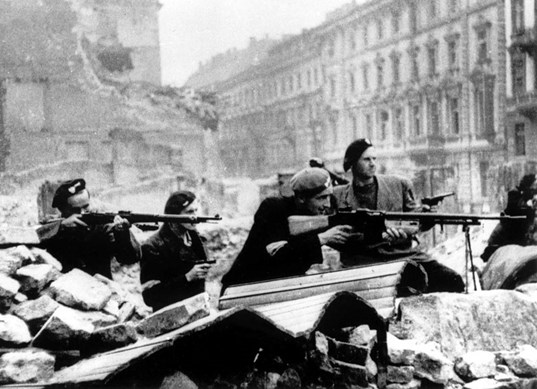
Polish resistance troops with a wide variety of pistols, a Mauser rifle, and a “7,92 mm rkm Browning wz. 1928” (a Polish-built variant of the Browning Automatic Rifle).
The street fighting in Warsaw was particularly fierce, as evidenced by the loss of more than 15,000 Polish resistance fighters. The Germans lost about 17,000 men. Worse still were the brutal German reprisals against Polish civilians—by August 8 more than 50,000 were murdered. By the end of the Warsaw Uprising, nearly 200,000 Polish civilians had been killed. Many were executed by German SS units, like the SS Kaminski Brigade and the SS Sturmgruppe Dirlewanger, but the conduct of any German unit involved in the Warsaw fighting was reprehensible.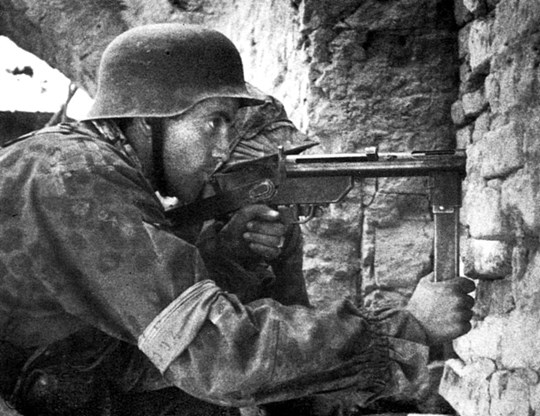
Polish resistance troops in Warsaw used a great deal of captured German equipment. This man uses the Polish-built Błyskawica SMG.
On August 4, the RAF began flying supply missions to the Polish Resistance in Warsaw. More than 200 missions were flown but fewer than 50 percent of the supplies were recovered by the Poles. American supply missions did not begin until Sept. 18, but soon stopped. The Soviets dropped some supplies in late September. Few landed in Polish-controlled territory, and the uprising that began with such promise would soon end in agony.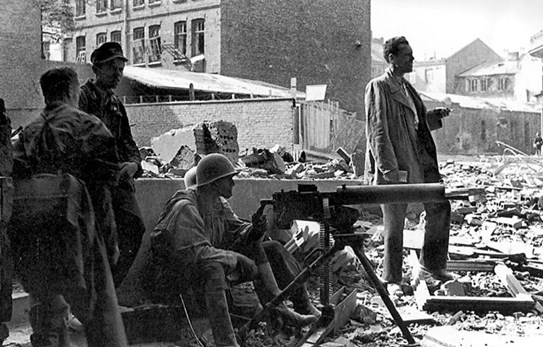
Near the end of the Uprising: Polish resistance with the Ckm wz.30, a Polish-built copy of the Colt MG38 (a commercial M1917 MG), chambered in 92×57mm Mauser.
Remaining Polish forces surrendered on Oct. 2, 1944. Ostensibly, the German commanders promised to treat Home Army soldiers in accordance with the Geneva Convention, and to treat Polish civilians humanely. It was a lie. The entire population was expelled from Warsaw. Tens of thousands were sent to Germany’s labor camps, and equal numbers were sent to death camps. Heinrich Himmler commanded, “The city must completely disappear from the surface of the earth.” What little was left standing after five years of Nazi occupation was blasted into rubble like the rest. By January 1945, nearly 85 percent of Warsaw had been destroyed.
The Warsaw Uprising did not produce a victory for Polish patriots. It did, however, create a triumph of the human spirit, showing mankind’s willingness to sacrifice everything to breathe the air of freedom.
Additional Reading:
First to Fight the Blitzkrieg: Polish Small Arms in September 1939














